A COLDFRAME IS WARM, UNLESS IT’S…
A Fourth Dimension for the Garden
A “coldframe” is one of a few ways to add a new dimension — time — to gardening. Especially, for me, vegetable gardening. It inserts time where time does not exist. Instead of my gardening season screeching to a stop with a hard freeze sometime in late November or early December, a coldframe extends it a few weeks, possibly even more. And it can do the same thing at the beginning of the season, getting plants going and harvested sooner. (Multidimensional vegetable gardening is covered more thoroughly in my book Weedless Gardening.)
At its most primitive, a coldframe is nothing more than a clear plastic or glass topped box set directly on the ground, functioning in the garden as a miniature greenhouse. My simplest coldframe was made from four pieces of scrap pine boards notched together into a three-foot by six-foot rectangle. The covering was quarter-inch plexiglass whose previous incarnation was that of a floor runner beneath office chairs.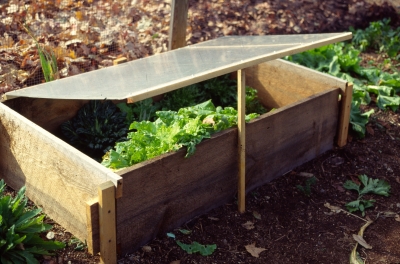
My most elaborate coldframe was a purchased structure, looking much like a miniature barn with a double-wall, polycarbonate plastic roof that folded open or closed along tracks in the eaves.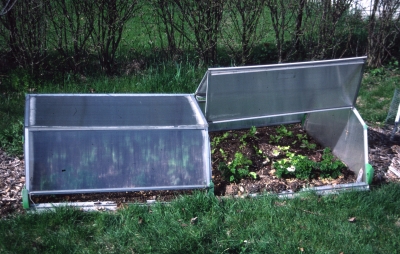
Year ‘Round Use
I got year ’round use from the various coldframes I’ve used. In winter they were home to such cool temperature vegetables as lettuce and spinach. I got a jump on spring by sowing cold-hardy vegetables and flowers in the frames in March, then sowing cold-tender vegetables and flowers in early May.
Even in summer, a coldframe need not be idle: with a little shading from the sun, the humid atmosphere within is ideal for propagating new plants by leafy cuttings. In autumn, rather than sowing spinach and other cold-hardy vegetables again, I could use the space to hold potted bulbs for forcing or to overwinter plants just barely cold-hardy here.
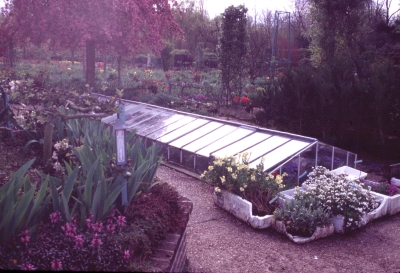
Coldfames (not mine)
The ideal site for a coldframe is a well-drained soil with a slope facing east or southeast. At the very least the site needs to receive full sun in winter. A coldframe will keep even warmer in winter if it’s snuggled up near a fence, wall, or dense, evergreen shrub on its north side.
The larger the coldframe the more even the temperatures remain inside, but the coldframe needs to be small enough so you’re able to reach the plants. After all, it’s a coldframe, not a greenhouse.
Basic Build
The traditional form for a coldframe is a box with a sloping roof. The roof is highest along its north edge and slopes down an inch or two for every foot from back to front, with the lowest point no less than a foot high.
The transparent cover for a coldframe is generally glass or plastic mounted in some sort of a frame. The clarity and permanence of glass is an advantage. Glass is also readily available, since people always seem to be discarding old window frames. But glass does break easily: I once had a cat that constantly walked — perhaps he pounced — on my glass frames and broke them.
Partly because of that cat, I came to prefer plastic for covering my coldframes. Plastics are lightweight and easily cut to fit makeshift frames. The light weight of plastic is a debatable advantage, as I learned one blustery spring morning when I found my coldframe’s plastic cover in my neighbor’s yard. Plastic also deteriorates with age, becoming less transparent to light, though this problem is mitigated by storing the covers in the garage for the summer.
I made my most recent coldframe of wood topped with a double wall, polycarbonate roof sloping to the south and opening like a bifold door for venting and access. The hinges of the roof not only allowed easy venting, opening, and closing, but also kept it from blowing off in strong winds.
More Heat, Even More Heat, and other Options
For extra heat retention, a coldframe might have soil banked up against its sidewalls. Same goes for using a double layer of plastic or glass. Dug down so its ground level is a foot or more below the outside level, a coldframe provides even cozier winter quarter. Covering the plastic or glass with some insulating material on cold nights helps hold in the day’s heat. European gardeners would make straw, rollup mats for this purpose.
If a source of heat is added to a coldframe, it’s then called a “hotbed.” The traditional source of heat for hotbeds was manure. The soil within the frame was dug out and replaced with packed-down horse manure, well watered, then topped with a few inches of soil. The composting manure provided weeks and weeks of gentle warmth. Electric heating cables can also provide heat. They’re made to withstand water and an occasional, accidental poke with a trowel.
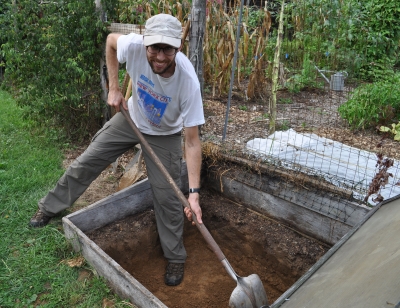
David helping out, digging a hotbed
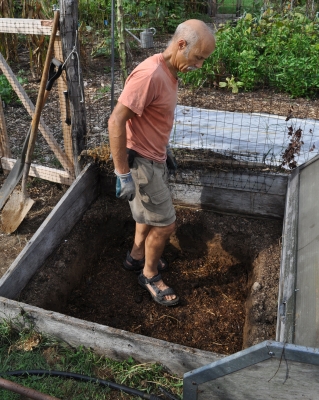
Tamping down hotbed
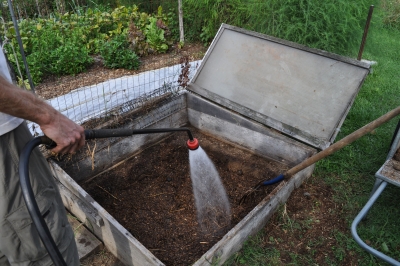
A well-sealed coldframe needs close attention to ventilation to keep plants from cooking. My homemade coldframes were always admittedly leaky: the covers didn’t fit tightly and cold air blew in through cracks at the joints. The advantage of all this leakage was that I didn’t have to worry about the coldframe overheating if I forgot to vent it or if I was away from home when a cloudy day turned sunny.
I’ll admit to no longer having a coldframe. After many years of use, excess rot finally rendered my last frame hardly functional, so I dismantled it. No matter; I still get to insert that fourth dimension into my garden year.
Right out in some beds in the the vegetable garden, various “tunnels” have taken over the job of the coldframes. Initially, they were Chase Cloches, from England, springy wires elegantly designed to hold glass in place so the barn-shaped structures could be laid end to end down a row. (They were given to me many years ago by Eliot Coleman, and I’m ready to pass them on to any takers; let me know.)

Chase cloches
Nowadays, wire hoops support plastic film for the same benefit as the Chase Cloches and the coldframe. The benefit of both the cloches and the hoop tunnels is that they both are temporary, easily dismantled for compact storage through the summer.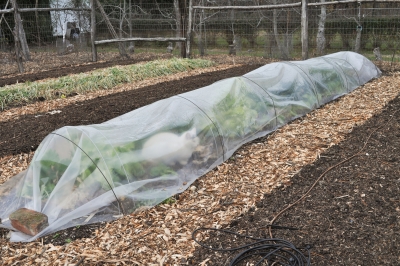
Many years ago I replaced the Bilco door, which gave outdoor access to the basement, with home made wooden frame supporting double-wall polycarbonate plastic.  In addition to providing a bright, very cool but rarely freezing home for potted evergreen and deciduous plants, the basement stays warmer and snakes no longer wriggle their way in through openings.
In addition to providing a bright, very cool but rarely freezing home for potted evergreen and deciduous plants, the basement stays warmer and snakes no longer wriggle their way in through openings.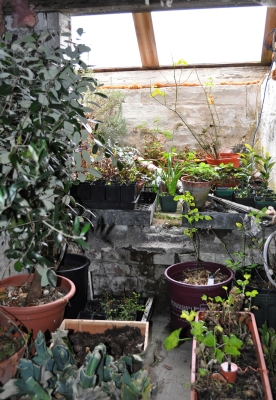
The coldframe’s significance also withered away once I built a greenhouse . . .

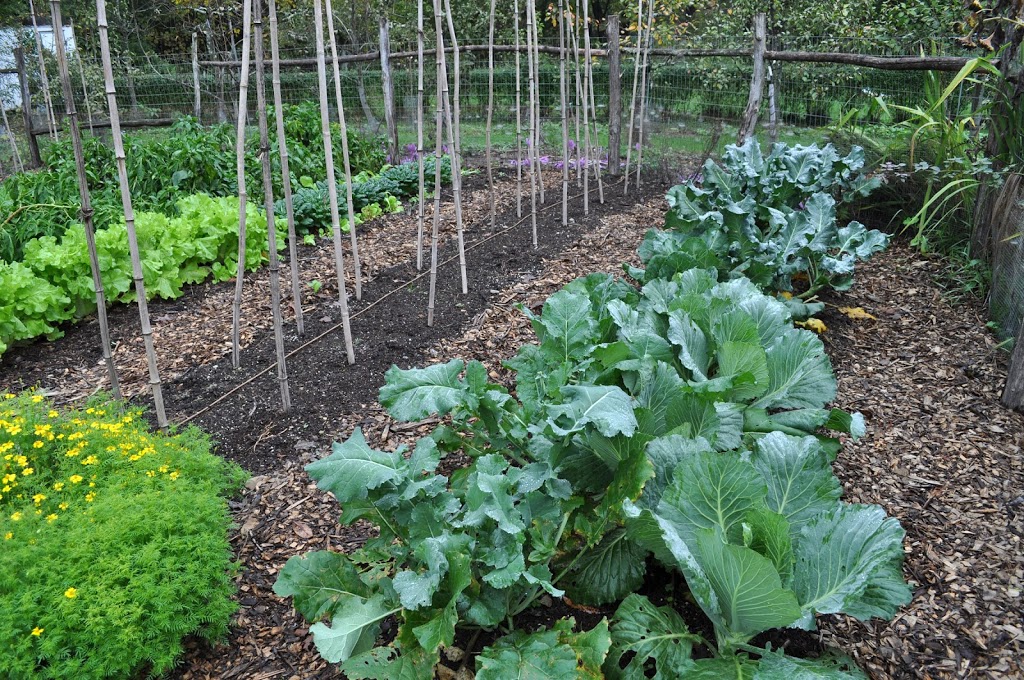

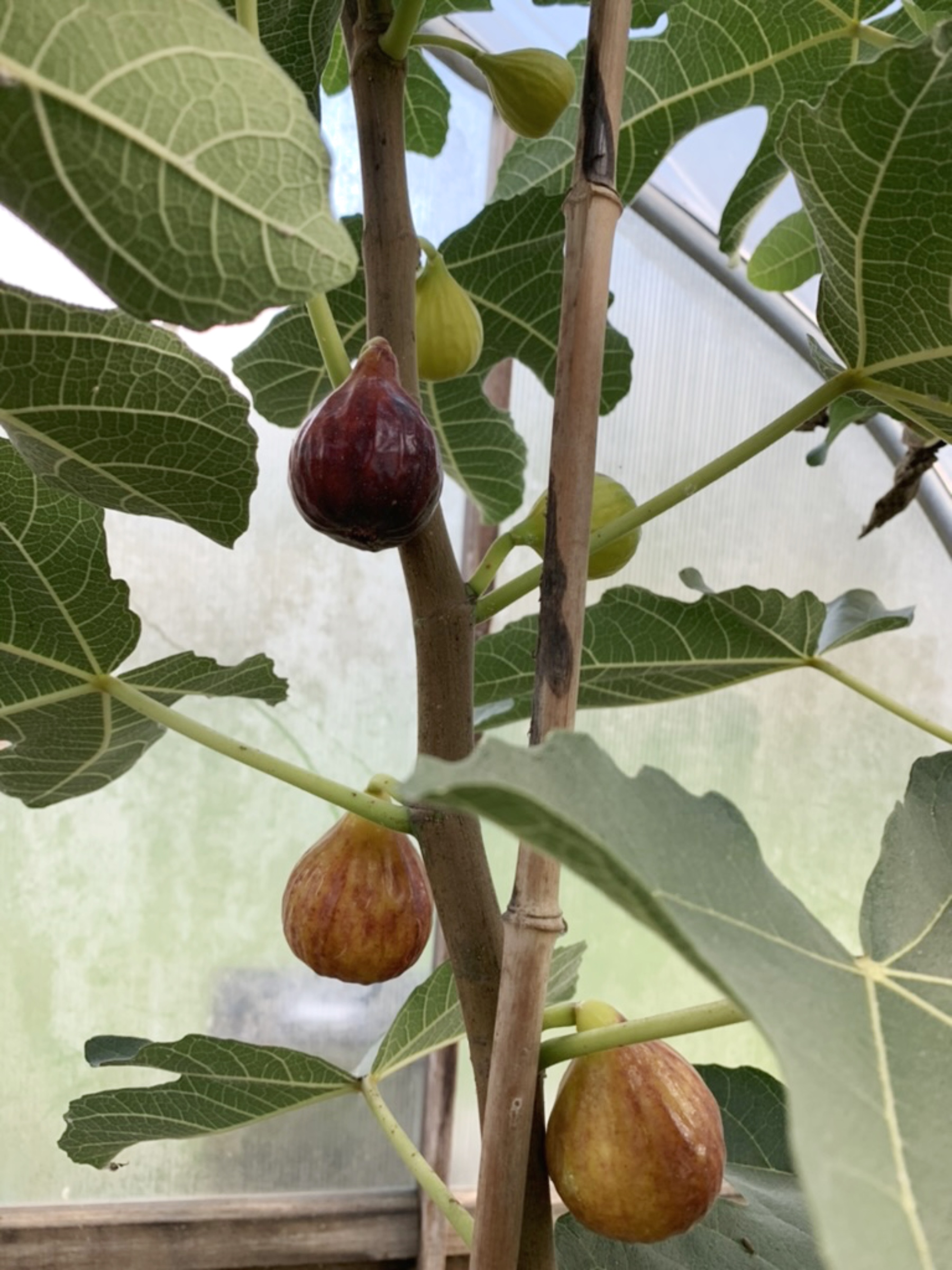
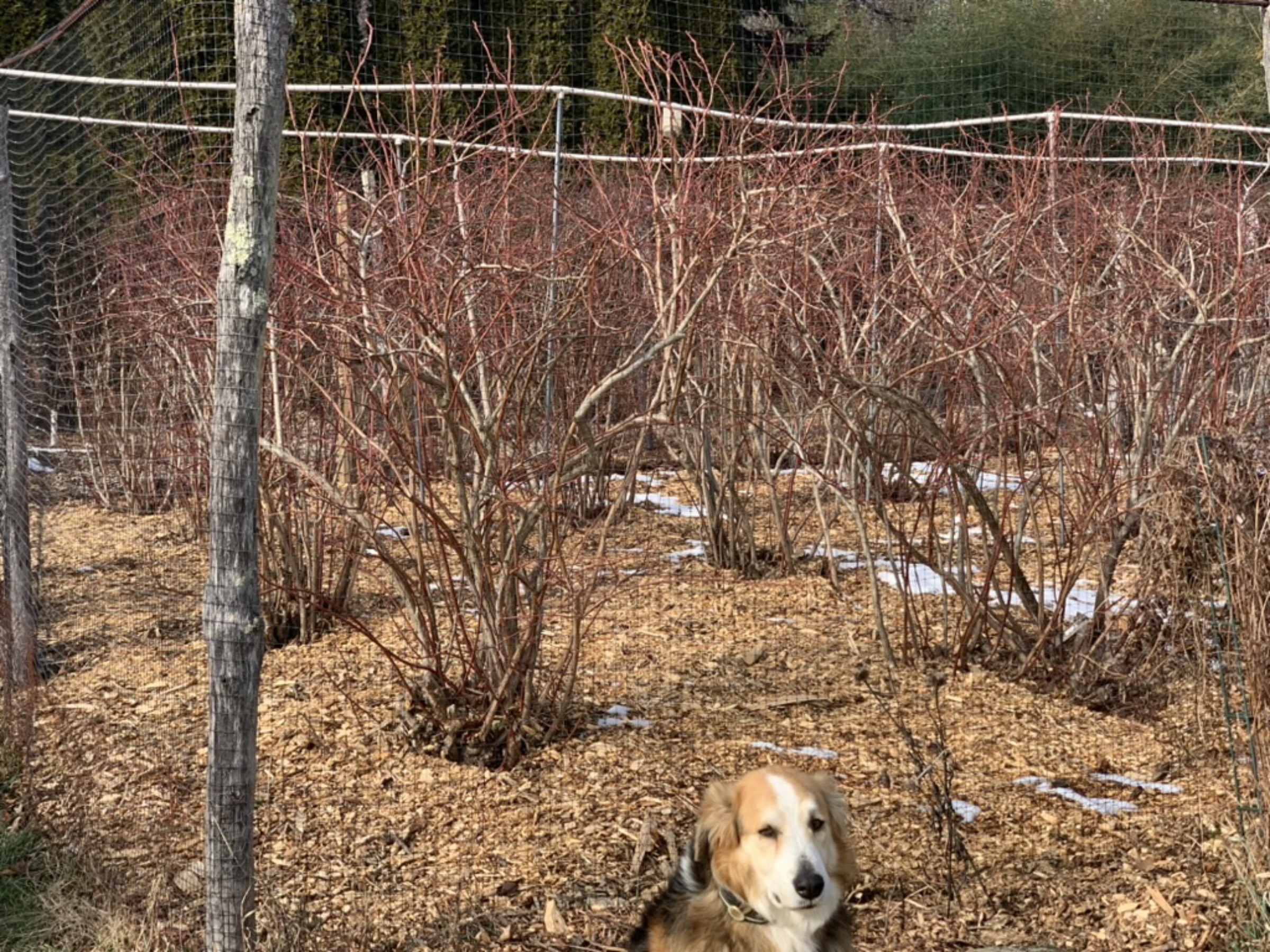
Why is an east or southeast slope preferred for a cold frame site? I would have guessed that sloping south would be ideal for catching the sun.
I would agree with you. East or southeast would be if, for some reason, you wanted it to avoid getting too hot later in the day,
I see, thank you for clarifying!
How cold is too cold for a small cold frame?
A small cold frame will always produce temperatures warmer than outdoor temperatures.